Are the wheels coming off the Iran deal? Less than a year after Iran, America, and five other world powers inked a comprehensive nuclear accord, a debate over its terms has erupted anew.
In Washington, the braggadocio of a prominent White House aide is fueling Republican accusations that President Obama deliberately deceived the Congress and the country about Iran and the deal. And in Tehran, frustration over the residual impact of American sanctions has prompted increasingly resentful accusations from Iranian leaders that the United States has failed to live up to its end of the bargain. As a result, some are fretting that the deal is “at risk” and are laying blame on the White House doorstep.
Both claims are spurious, and deserve a more forceful rebuttal from the Obama administration. In the end, however, the ruckus over recent comments by Deputy National Security Advisor Ben Rhodes is largely an inside-the-Beltway drama—one that provides endless entertainment for Washington insiders but has little real significance for deal or American diplomacy.
By contrast, Iran’s dissatisfaction presents a serious diplomatic dilemma for Washington. But it should not be interpreted as evidence that the deal is “unraveling.” Rather, the chorus of complaints from Tehran demonstrates the accord signed in July 2015 is working exactly as it was intended—forestalling Iranian nuclear ambitions while amplifying the incentives for further reintegration into the global economy.
Obama’s handling of this first real test of the nuclear agreement will be crucial for sustaining its credibility. For the sake of the deal, and for any prospect of a durable Thermidor for the revolutionary state, Washington should resist the temptation to assuage Iran’s post-deal growing pains. If Iranians wants wholesale economic rehabilitation, their leadership needs to embrace the kind of policies that would yield that—in other words, meaningful political, economic, and foreign policy reform.
“Iranophobes” and “thieves”
Not surprisingly, Iranian officials are seeking a quicker fix, and they have mounted an intense campaign to wrest supplementary sanctions relief from Washington. Their principal argument is that the theocracy has been stiffed. On an April visit to Washington, Valiollah Seif, the head of Iran’s Central Bank, questioned the benefits of the nuclear agreement, insisting that Tehran has received “almost nothing” of the sanctions relief that was promised as part of the deal, formally called the Joint Comprehensive Plan of Action (JCPOA). Mohammad Javad Zarif, the country’s smooth-spoken foreign minister, has contended that “the United States needs to do way more,” warning that “if one side does not comply with the agreement then the agreement will start to falter.”
And Iran’s supreme leader, Ayatollah Ali Khamenei, charged recently that “the Americans are engaged in obstruction and deception, adding: “on paper, the Americans say banks can trade with Iran but in practice they act in such an Iranophobic way that no trade can take place with Iran.”
Adding fuel to the fire are changes to U.S. visa policies that are perceived at constraining Iran’s economic rebound, deliberately inflammatory rhetoric from the U.S. Congress, and a recent Supreme Court verdict that paves the way for a $2 billion payout to victims of terrorist attacks attributed to Tehran or its proxies. Iranian President Hassan Rouhani has described the decision as “flagrant theft” and evidence of enduring American hostility toward Tehran.
Upholding our side of the bargain
Tehran’s narrative plays equally well to its essential constituencies: the revolution’s power brokers, steeped in official narratives of American treachery; an Iranian citizenry impatient for its long overdue peace dividend; and a European business community anxious to reclaim its piece of the pie after an unwelcome five years of having to forgo a lucrative market.
And it wouldn’t be the first time Tehran got cold feet about its nuclear obligations out of an unfortunate sense of that the payoff was insufficient. In 2005, two years after a deal with Britain, France, and Germany to suspend core aspects of its nuclear program, Iran’s leadership soured on that deal and reneged. Anxiety about a repeat performance is prompting new U.S. efforts to facilitate business in Iran and a mounting debate in the press and on Capitol Hill around additional American sanctions relief.
But Iran’s campaign is grounded in a fundamental falsehood: that Washington has failed to live up to its end of the bargain. In fact, Washington has delivered fully on the sanctions relief pledged under the JCPOA, and officials in the White House, State Department, and even the enforcement office of the Treasury Department have engaged in extraordinary outreach to clarify remaining restrictions and underscore American commitment to the terms of the deal.
[T]he rewards of Iran’s nuclear concessions are actually widely evident.
Moreover, the rewards of Iran’s nuclear concessions are actually widely evident—in the volume of new trade and investment that is already underway; in the scope and velocity of diplomatic and commercial reengagement with Iran; in the swifter-than-anticipated revival of oil exports. Heads of state from Italy and India, from South Korea to South Africa are beating a path to Tehran, accompanied by contingents of eager investors. Meanwhile, Iranian officials including Seif—chief of the same Central Bank that was formerly barred by sanctions—headline swanky conferences aimed at wooing European business players. The great Iranian gold rush is on.
Tehran was never promised a rose garden
The catch is that the money is moving more slowly than Iranian officials seem to have anticipated—and the trickle-down effect has been almost nonexistent for the average Iranian. The explanation for this lag is complex and multi-dimensional.
First and foremost, Iran is hard hit by the decline in oil prices, which have fallen by roughly 60 percent since the interim nuclear deal was signed in November 2013. Even in the best of times, the Islamic Republic was never a particularly easy place to do business, and many of its structural economic problems have been exacerbated by a decade of sanctions and the particularly egregious mismanagement of the 2005 to 2013 tenure of Iranian President Mahmoud Ahmadinejad.
Iran’s designation since 2008 as a “high-risk and non-cooperative” jurisdiction by Financial Action Task Force, a multilateral body established to combat money laundering and terrorist finance, poses additional hurdles for banks. In addition, a host of other market distortions induce investor caution: corruption, a bloated and opaque banking system, an inflexible labor market, unattractive contract terms for energy investments, the traditional dominance of the public sector.
Tehran’s challenges in luring capital is further complicated by its reputation for provocative domestic and regional behavior. Torching embassies, arresting tourists and dual-national businessmen, testing ballistic missiles—none of this provides a conducive context for Iran’s reintegration into the global economy. As the old adage goes, capital is a coward, and the Islamic Republic is a haunted house.
[C]apital is a coward, and the Islamic Republic is a haunted house.
Iran has seen this all before. Similar factors undercut Tehran’s previous efforts to open up to the global economy. In the early 1990s, after the long war with Iraq, then-President Ali Akbar Hashemi Rafsanjani sought foreign trade and investment as part of his massive reconstruction program. Initial outcomes were encouraging, but falling oil prices, excessive short-term debt, and the perpetuation of an ideological foreign policy drove away investors and undermined his economic reforms.
This time around, American sanctions have cast a long shadow. The nuclear deal left intact an array of restrictions: the primary U.S. embargo on Iran as well as financial measures that preclude access to the U.S. dollar and penalize third countries for doing business with Iranian individuals and entities that are involved with terrorism or other malfeasance. The vestiges of the sanctions regime create truly epic compliance issues for any international investor. And the hangover effect of a decade of stringent (and costly) enforcement has generated a culture of overcompliance in the international financial sector, since institutional due diligence is an integral dimension of the industry’s viability.
The vestiges of the sanctions regime create truly epic compliance issues for any international investor.
None of this should come as a surprise to Tehran; American officials were crystal clear throughout the negotiations and in advocating on behalf of the deal that the deal only removed the nuclear-related sanctions and that U.S. measures imposed as a result of Iran’s support for terrorism, its human rights abuses, or other issues would remain intact. And every sensible analyst looked past the inflated rhetoric of the deal’s opponents, who brayed against the deal as a massive “cash bonanza,” to recognize that the residual sanctions regime would remain a significant factor in Iran’s post-deal economic picture. As I wrote at the time:
“What remains [of the sanctions regime] is not insubstantial. The U.S. Treasury Department remains the long pole in the international sanctions architecture, and even residual American measures will pose a powerful deterrent against business in Iran. Iran’s worst actors will remain sanctioned by the United States—tainting, by extension, any foreign company that does business with them after the deal. For American firms and individuals, the embargo on U.S. trade and investment in Iran criminalizes even the most tangential involvement in the Iranian economy outside the specific sectors exempted under the deal.”
“Congressional opposition to sanctions termination means that the Obama administration will have to rely on waivers and other inherently temporary mechanisms for reversing existing measures; that alone entails sufficient uncertainty to give major investors around the world significant qualms about committing to the kind of multi-year, multi-billion dollar projects that Iran’s energy sector requires.”
The politics of hype
So if this was entirely predictable, why is Tehran crying foul now? Unlike in the United States—where the agreement’s shortcomings were oversold (if anything) rather than downplayed—in Iran there was a triumphalism with which the deal was sold domestically. This was mostly because of the peculiarities of Iran’s political system. To avoid the appearance of contravening the “red lines” articulated by Khamenei, the country’s ultimate authority, Iranian negotiators depicted the JCPOA as delivering wholesale sanctions relief. Rouhani described the outcome as a “legal, technical, and political victory” for the country, emphasizing that Tehran achieved “more than what was imagined.”
Iran’s politically motivated embellishments were exacerbated by the hype surrounding the deal, cultivated by entrepreneurs and aspiring middlemen who presented Iran in hyperbolic terms as “the best emerging market for years to come” and “one of the hottest opportunities of the decade.” But while it may offend the Iranian ego, the relative scale of the opportunity in Iran is more modest than other much-heralded economic openings, such as China. It is hardly inconceivable that many banks and other firms have simply chosen to sit this first round out.
Tehran’s turn to step up
Neither Iran’s economic challenges nor the grievances of its leadership are “fraying” the nuclear accord; in fact, they only highlight its underlying logic. While the deal’s scope was finite—it was not a wholesale rapprochement or rehabilitation—many of its supporters argued that its logic would prove self-reinforcing. Iran’s gradual reintegration into the global economy would bolster the case among its leadership for a broader moderation of its domestic and foreign policies precisely in order to boost their benefits.
Tehran’s dissatisfaction with the payout to date suggests this formula is working. A little bit of sanctions relief has whetted the entrepreneurial appetites of the clerical state. Despite official invocations proclaiming a “resistance economy,” the trickle of new trade and investment from Europe and Asia into Iran since the deal was signed has only intensified pressure for more—and for more tangible dissemination of its benefits among the Iranian population. In other words, it is the success of the nuclear deal—rather than its shortcomings—that is driving the complaints that have emanated from Iran.
[I]t is the success of the nuclear deal—rather than its shortcomings—that is driving the complaints that have emanated from Iran.
The United States is not responsible for the hesitancy of international capital and other economic hiccups that Tehran has experienced in the aftermath of the nuclear agreement. The culpability resides, as it always has, with Iran and the risks that its government’s policies pose for international business. If Iranians want to see their nascent opening to the international community expanded—if they want the peace dividend they have been promised, they need to look to their own leadership and its policies. If Iran’s Central Bank governor wants “normal conditions” and “access to the U.S. financial system,” as he demanded during his Washington visit, let him return to Tehran and help instill the kind of reforms that would make those goals possible.
There are sensible steps that Washington can take to ensure that the provisions of the nuclear deal are fully feasible, including limited mechanisms for enabling transactions, such as the repatriation of previously frozen assets, that are specifically permitted under the deal. Such exceptional measures are reasonable—not because they help Tehran, but because they help sustain consensus between Washington and its European partners and help preserve the West’s negotiating leverage with any future targets of American or multilateral financial sanctions.
However, it would be profoundly detrimental for Washington to provide significant unilateral relief to Tehran without reciprocal additional Iranian concessions. And the PR blitz by senior U.S. officials to reassure Iran’s prospective foreign investors has taken on an unseemly tone, especially since existing sanctions prohibit U.S. persons from facilitating transactions with Iran by foreign entities.
These measures may be aimed at building confidence, but they ultimately have the opposite effect—eroding Iran’s incentives to abide by the deal, undermining any rationale for broader changes. Iran remains a risky place to do business, and it is in Washington’s interests—as well as those of Iranians and the broader international community—that Tehran focuses on mitigating those risks rather than seeking to subvert their penalties.
The nuclear deal is working; Iran’s nascent reintegration into the global economy is intensifying internal debates and popular expectations. This is all to the good. But to get more, Tehran will have to give more.
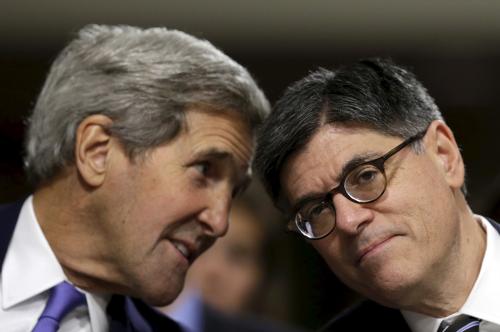
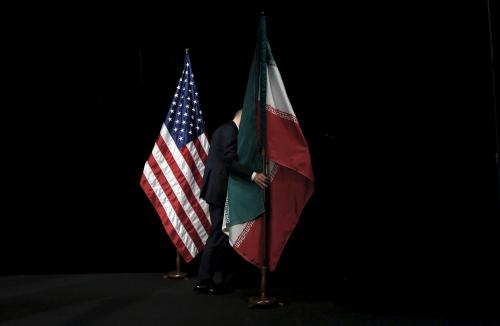
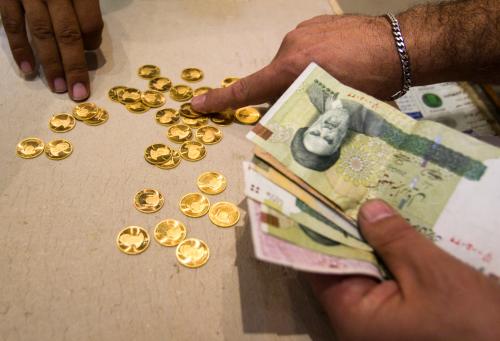
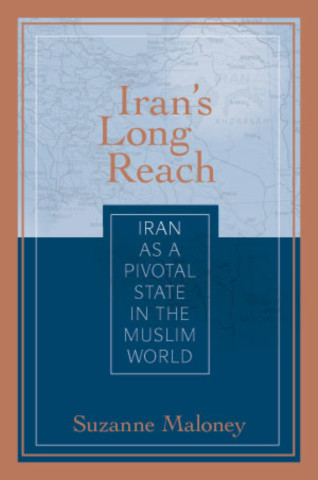
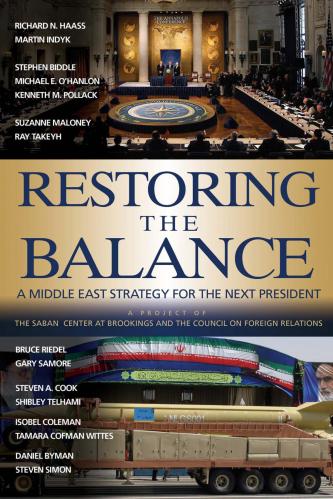
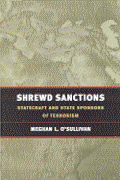
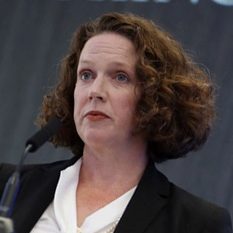


Commentary
Is the Iran deal unraveling? Think again.
May 20, 2016